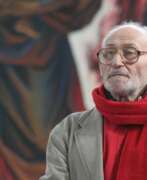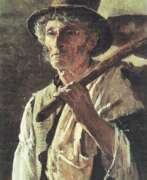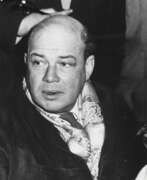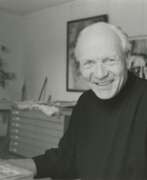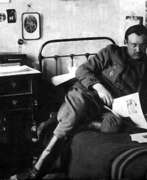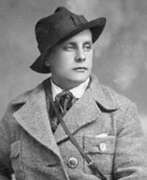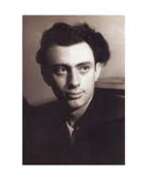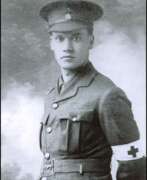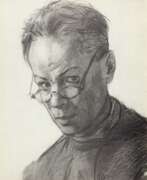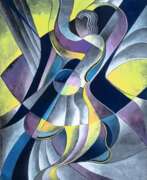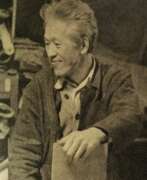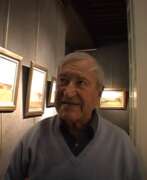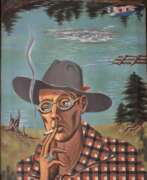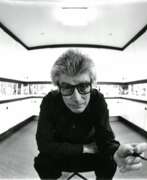Cityscape Avant-garde
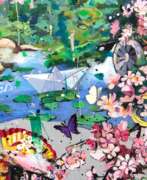

Angelo Accardi is a contemporary Italian artist. He grew up surrounded by both modern and traditional art. Although he studied fine art at the Art Academy of Naples, he never completed his training. Angelo Accardi illustrates surreal visions of everyday life under realistic backdrops of urban and natural landscapes. There is never a single meaning, but a whole story behind each painting. Ironic, striking, and playful, Accardi’s unique perspective and avant-garde style is a result of his diverse inspirations.
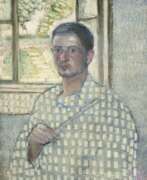

Vladimir Davidovich Baranov-Rossine (Russian: Владимир Давидович Баранов-Россине) was a master of the Russian avant-garde, a prolific painter, sculptor, and inventor, whose work significantly contributed to the Cubo-Futurism movement. Born on January 1, 1888, in Kherson, he was originally named Shulim Wolf Leib Baranov but is best known by his pseudonym, Daniel Rossine. His early artistic education took place in Odessa and then at the St. Petersburg Academy of Arts, laying the groundwork for his future as a revolutionary artist.
In 1910, Baranov-Rossine moved to Paris, a pivotal move that introduced him to the burgeoning European avant-garde scene. It was there, alongside other notable artists such as Marc Chagall, Osip Zadkine, Alexander Archipenko, and Chaim Soutine, that he became an inhabitant of the famous Parisian house "La Ruche." His innovative work, particularly the invention of the Optophonic Piano, which projected colors in sync with music, underscored his commitment to blending art and technology, a hallmark of his career.
Tragically, Baranov-Rossine's life was cut short when he was arrested by the Gestapo in 1943 and subsequently died in Auschwitz in 1944. Despite his untimely death, his legacy lives on through his contributions to modern art and technology. His works can be found in various museums and galleries, celebrated for their vibrant expression and avant-garde techniques that continue to inspire artists and collectors alike.
For those intrigued by Vladimir Davidovich Baranov-Rossine's pioneering work and its lasting impact on the art world, signing up for updates on new product sales and auction events related to this avant-garde master is highly recommended. This ensures enthusiasts and collectors are always informed about the latest opportunities to engage with Baranov-Rossine's remarkable legacy.


Yves Brayer was a French painter and lithographer known for his landscapes, portraits and still lifes.
Brayer studied at the École Nationale Supérieure des Beaux-Arts in Paris and then in Rome. He was influenced by classical art and inspired by Mediterranean landscapes, which he often depicted in his paintings. He was also interested in the culture of ancient Greece, which influenced his work.
Brye's early work was inspired by the Cubist and Surrealist movements. He was a founding member of the Paris School, a group of artists working in the French capital in the mid-twentieth century. He was also a member of the French Academy of Fine Arts and a Knight of the Legion of Honour.
Bryeux's work has been exhibited in prestigious galleries and museums around the world, including the Louvre in Paris, the Museum of Modern Art in New York and the National Museum of Western Art in Tokyo. His paintings are in many private collections.
Over the course of his career, Brye has received numerous awards and honours, including the Grand Prix de Rome and the Prix de l'Institut de France. He is considered one of the most important French artists of the 20th century.
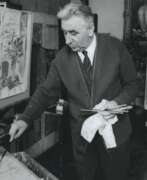

Jules Cavailles was a French painter.
He started as a technical draughtsman. In 1925 he enrolled at the Académie Julian and he began exhibiting at the various Parisian Salons from 1928 – the Société des Artistes Français, Société des Artistes Indépendants and Salon d'Automne. He was soon invited to participate at the Salon des Tuileries and in 1936 he organised the 14th exhibition of the Artistes de ce temps in the Petit-Palais. In the same year he received the prestigious Grant Blumenthal and he was soon awarded the commission to decorate the Pavilion of Languedoc for the Exposition Universelle. He was part of a group of artists called “La Realite Poetique”. His artistic style is characterised by the juxtaposition of pure colour, derived from an interpretation of fauvist painting which was less interested in the early Fauve artists’ search for intensity and dynamism than a simple expression of ‘joie de vivre’.
He worked in oils, gouache, and pastel, and his subject matter featured figures, portraits, nudes, still lifes, flowers, landscapes, and animals. His work is represented in many leading collections and museums, including the Modern Art Museum in Paris, and the museums in Toulouse, Albi, Marseilles, Chicago, and Helsinki.
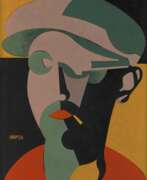

Karl Hermann Haupt was a German painter, graphic artist and designer.
He studied painting at the Art School in his native Halle from 1920 to 1923. From 1923 to 1924 he attended courses at the Bauhaus in Weimar, where his teachers included Josef Albers, Laszlo Mohoy-Nagy, Wassily Kandinsky, Paul Klee and Walter Gropius. After his studies at the Bauhaus, Haupt returned to Halle, where he worked as a painter until 1926. He then moved to Krefeld to begin a career as a textile painter. Haupt remained in Krefeld for most of the 1930s, combining painting with his studies with Johannes Itten at the Krefeld School of Textile Decoration.
After military service during World War II, Haupt worked for the regional government of Saxony-Anhalt until 1951, when he was appointed lecturer at the School of Applied Art in Berlin. From 1953 he worked as a scientific illustrator and photographer at the Academy of Sciences in Berlin until his death.
Haupt's paintings and graphics often depicted urban scenes and industrial landscapes, and he was particularly interested in the human figure and the impact of modern society on the individual. His work was known for its sharp, crisp lines and attention to detail.
Today, Haupt's work is recognized as an important contribution to modern art in Germany, and his paintings and drawings are in the collections of major museums around the world.
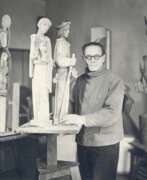

Jean Lambert-Rucki was a Polish avant-garde artist, sculptor, and graphic artist. He was best known for his participation in the Cubist, Surrealist and Art Deco movements. He exhibited at the 1913 Salon d'Automne in Paris; from 1919 was represented by both Léonce Rosenberg at the Galerie de l'Effort Moderne and the art dealer Paul Guillaume. In March 1920, Lambert-Rucki exhibited at the second exhibition of la Section d'Or, Galerie de La Boétie, Paris, and participated in the first exhibition of l'Union des Artistes Modernes, where he continued to show his works. He worked with diverse styles and media, at times he was influenced by the tribal art of Africa. Lambert-Rucki also became well known for his Cubist cityscapes.
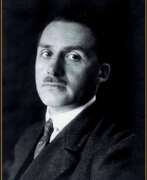

Andre Lhote, a French artist, was a pivotal figure in the Cubist movement, known for his contributions as a painter, theoretician, critic, and art teacher. His journey in the arts began at the École des Beaux-Arts in Bordeaux, focusing on decorative arts before shifting his full attention to painting after moving to Paris in 1906. Lhote's work initially drew influences from Paul Gauguin and Paul Cézanne, but by 1910, he was deeply entrenched in Cubism, aligning with artists like Fernand Léger and Jean Metzinger.
Andre Lhote's impact extended beyond his paintings; he was instrumental in developing Cubist theory through his writings and art criticism, notably contributing to La nouvelle revue française. In 1922, he founded the Académie André Lhote in Paris, shaping the future of many artists, including Henri Cartier-Bresson. His dedication to teaching and theoretical work earned him the Grand Prix National de Peinture in 1955 and a position as president of the UNESCO commission for sculpture's International Association of Painters, Engravers, and Sculptors.
For art collectors and experts, Andre Lhote's work represents a crucial chapter in the history of Cubism, offering insights into the movement's evolution and its theoretical underpinnings. To stay updated on exhibitions or sales featuring Andre Lhote's work, consider signing up for updates from reputable art institutions or galleries.

Conrad Marca-Relli was an American artist who belonged to the early generation of New York School Abstract Expressionist artists whose artistic innovation by the 1950s had been recognized across the Atlantic, including Paris. New York School Abstract Expressionism, represented by Jackson Pollock, Willem de Kooning, Franz Kline, Robert Motherwell, Marca-Relli and others became a leading art movement of the postwar era.
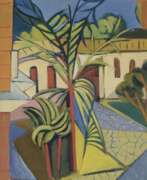

Concetto Maugeri is an Italian artist. He studied at the Academy of Fine Arts in Rome and was a member of Gruppo Forma 1 with other artists such as Accardi, Attardi, Consagra and Dorazio. His work was characterised by a strong use of colour and bold brushstrokes.
Concetto Maugeri tragically died at the age of 32 in a car accident. Despite a short career, Mauggeri is considered an important figure in the history of Italian art.
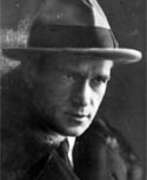

Efim Semyonovich Minin (Russian: Ефим Семёнович Минин) was a Belarusian artist of the first half of the twentieth century. He is known as a painter, graphic artist and teacher.
Efim Minin created portraits, worked in woodblock printing technique, was engaged in exlibris. One of the leading themes of the artist's work was the cityscapes of his native Vitebsk, which he used for many exlibris. His artistic legacy includes several series of woodcuts dedicated, in particular, to Vitebsk and the monuments of the wooden civilization of Belarus.


Vilmos Perlrott-Csaba was a Hungarian avant-garde artist and one of the brightest representatives of this trend.
He studied at the Julian Academy in Paris, was impressed by the work of Pablo Picasso, Cubism and Fauvism and became one of the creators of the Hungarian avant-garde style.
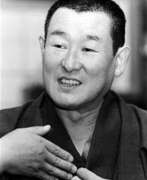

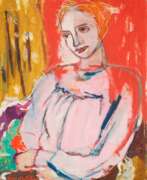

Else Weber-Rouwolf, born Else Rouwolf, was a German artist of expressive realism.
Else painted her first picture at the age of 30 and first exhibited in Hamburg in 1926. She became a participant of the Hamburg Secession, a member of the "Hamburg Society of Artists" and "Gedok", was friends with E. Hartmann and G. Volville. In 1929, the artist went to Paris for a year to study at the Academy Grande Chaumiere.
The main direction of Weber's work was portraiture - her models were artists, friends, husband and daughter, acquaintances and their children. Elsa also traveled extensively and painted landscapes. She survived the war, painted until she was ninety and died at the age of 100.
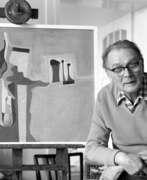

Erich Wegner was a German artist. His work was heavily influenced by the expressionist movement, and he often depicted scenes of daily life in a bold and expressive style.
Wegner's paintings were characterized by their thick brushstrokes and vibrant colors, which conveyed a sense of energy and movement. He often painted urban scenes, such as street scenes and cityscapes, and also produced numerous portraits and still-life compositions.
During the Nazi regime in Germany, Wegner's work was deemed "degenerate" and he was forbidden to exhibit his art. Despite this, he continued to work in secret and later resumed exhibiting his work after the war.
Today, Wegner's work is held in collections around the world, including the National Gallery in Berlin and the Museum of Modern Art in New York.


Carel Victor Morlais Weight was an English painter.
During the Second World War, Weight served with the Royal Engineers and the Army Education Corps. As an Official War Artist in 1945, he worked in Austria, Greece and Italy.
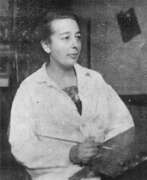

Gretchen Wohlwill was a painter and member of the Hamburg Secession. She was one of the German students at the Académie Matisse in Paris and developed a painting style influenced by French avant-garde art. In addition to painting, graphics were a focus of her work. Persecuted by the National Socialists because of her Jewish background, she emigrated to Portugal in 1940. After twelve years in exile, she returned to Hamburg in 1952.
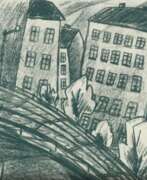

Willy Zierath was a German artist, painter, and interior designer. He was part of the "Novembergruppe" in Berlin, known for his political and artistic commitment. Zierath's versatile career included painting, graphic arts, and a stint at the renowned Bauhaus in Dessau from 1927 to 1930. He is recognized for his contributions to the artistic network alongside Otto Dix and George Grosz. His work was even highlighted in Lázló Moholy-Nagy's book "From Material to Architecture," underscoring his innovative approach, such as the "two-line tactile ladder and optical translation".
Despite his achievements, Zierath left Germany in 1930 to work in Moscow as a contract architect. During his time at the Metallurgical Combine on the Kuznetskstroy project, he continued to implement his creative ideas. Unfortunately, he died unexpectedly from a heart attack in 1934 while working on this project.
To learn more about his art, you can view a portrait of Willy Zierath painted by Ludwig Meidner at the Los Angeles County Museum of Art. MoMA also has some works by Zierath in its collection.
Stay informed about the latest news and events related to Willy Zierath's art. Sign up for updates and never miss an opportunity to explore new pieces, attend sales, or join auction events focused on his work. It's the best way to keep your finger on the pulse of Zierath's unique contributions to the world of art.


